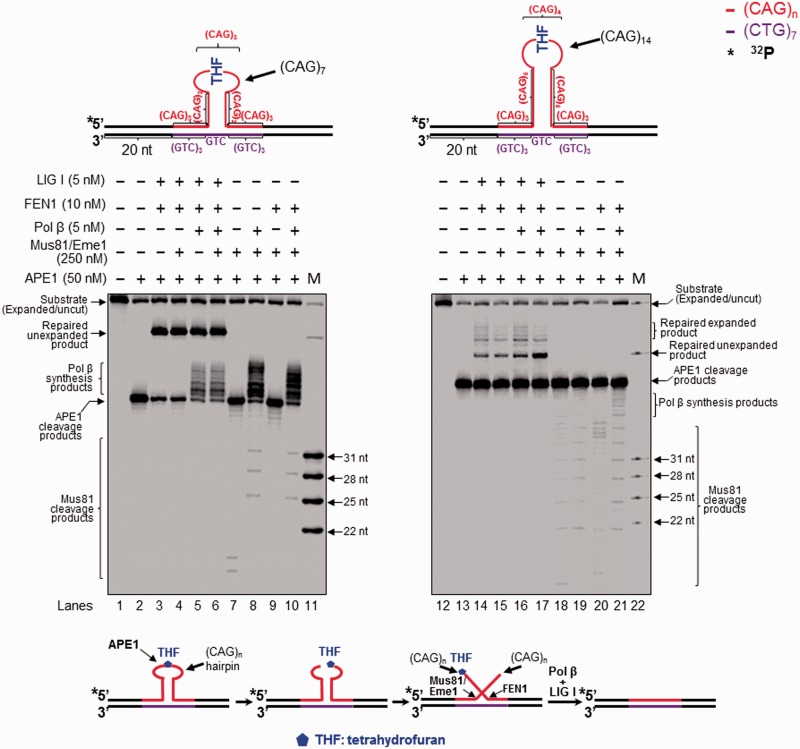Figure 2.
Attenuation of CAG repeat expansion through repair of an abasic site in the hairpin loop and Mus81/Eme1 cleavage. Repair of an abasic site in the loop region of a CAG hairpin and Mus81/Eme1 cleavage were examined with substrates containing a (CAG)7 (left panel) or (CAG)14 hairpin (right panel) with a THF in the hairpin loop region. Lanes 1 and 12 correspond to substrates only. Lanes 2 and 13 represent reaction mixtures with 50 nM APE1. Lanes 3, 5, 14 and 16 represent reaction mixtures with or without 5 nM pol β in the presence of 50 nM APE1, 10 nM FEN1 and 5 nM LIG I. Lanes 4, 6, 15 and 17 correspond to reaction mixtures with or without 5 nM pol β in the presence of 50 nM APE1, 5 nM FEN1, 250 nM Mus81/Eme1 and 5 nM LIG I. Lanes 7–8 and 18–19 correspond to reaction mixtures with or without 5 nM pol β in the presence of 250 nM Mus81/Eme1 and 50 nM APE1. Lanes 9–10 and 20–21 represent reaction mixtures with or without 5 nM pol β in the presence of 10 nM FEN1, 250 nM Mus81 and 50 nM APE1. Lanes 11 and 22 represent synthesized size markers (M). Substrates were 32P-labeled at the 5′-end of their damaged strands and are illustrated schematically above the gels. A scheme that indicates removal of a CAG repeat hairpin with a THF residue is illustrated below the gels. The size of Mus81/Eme1 cleavage products is illustrated in nucleotides.

